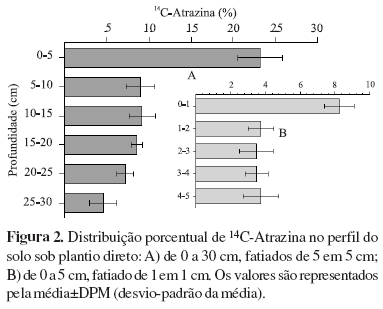The aim of this work was to compare leaching and potential groundwater contamination in soil under no-tillage and conventional tillage. This experiment was carried out in field conditions and soil columns, using an Oxisol under no-tillage (NT) and conventional tillage (CT) systems in Dourados, MS, Brazil. The determination of the hydraulic conductivity and matrix flux potential, with the use of a Guelph permeameter in the NT, showed a continue flow of water into the soil. Greater conductivity found in the surface soil, associated with the negative matrix flux potential, showed the discontinued hydraulic conductivity, when comparing subsurface layers, in the CT in relation to NT. However, NT resulted in less vertical displacement of atrazine than CT. The largest atrazine losses by leaching occurred more intensely after the first rainfall that followed the product application. Greater atrazine concentrations were retained in NT soil than in CT soil. This resulted in low levels of leaching from the NT soil, which indicates that no-tillage technology can reduce the environmental impact of pesticides.
soil pollution; leaching; herbicide; permeability






